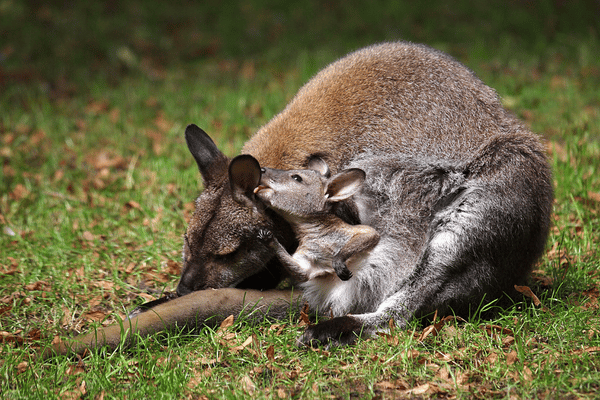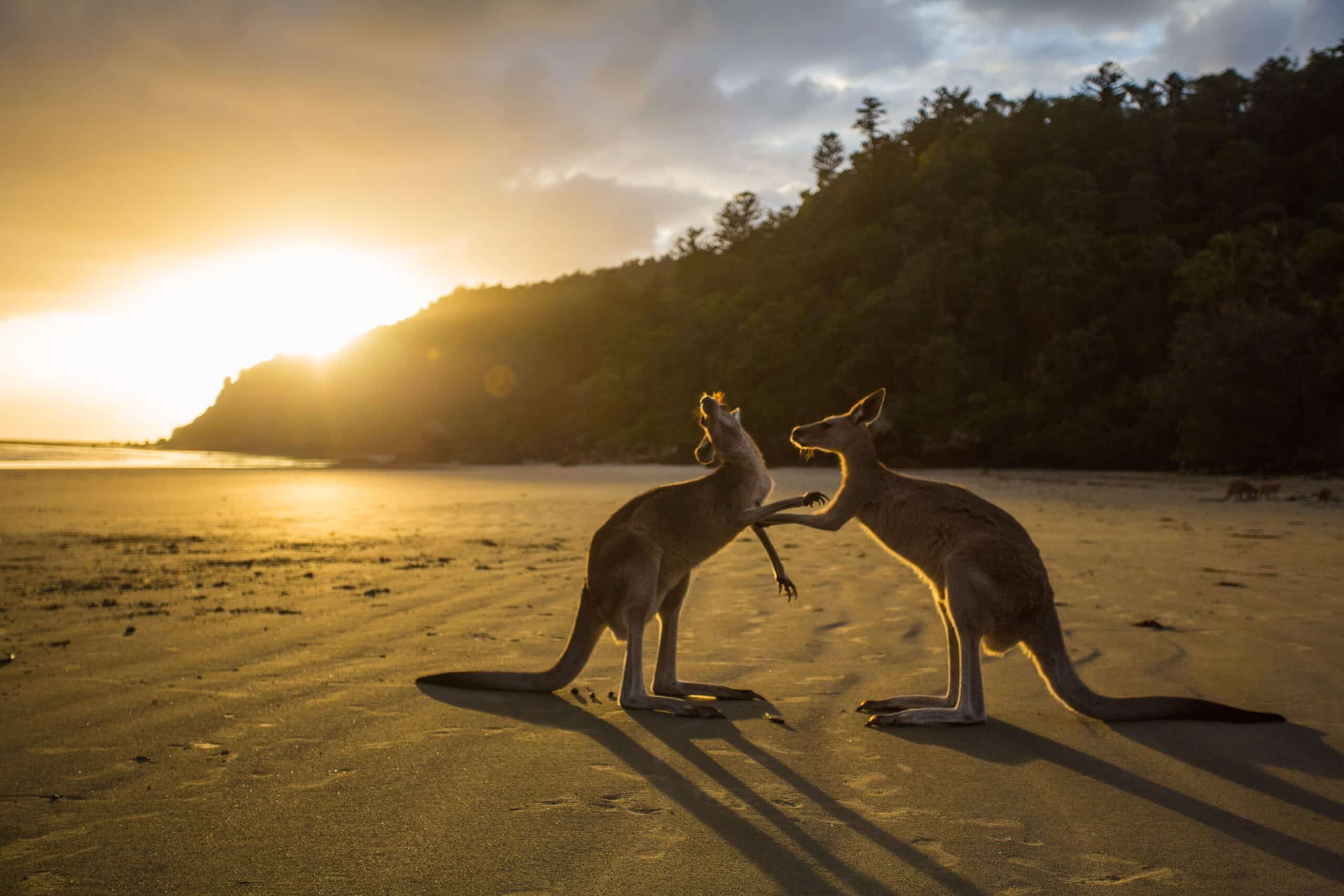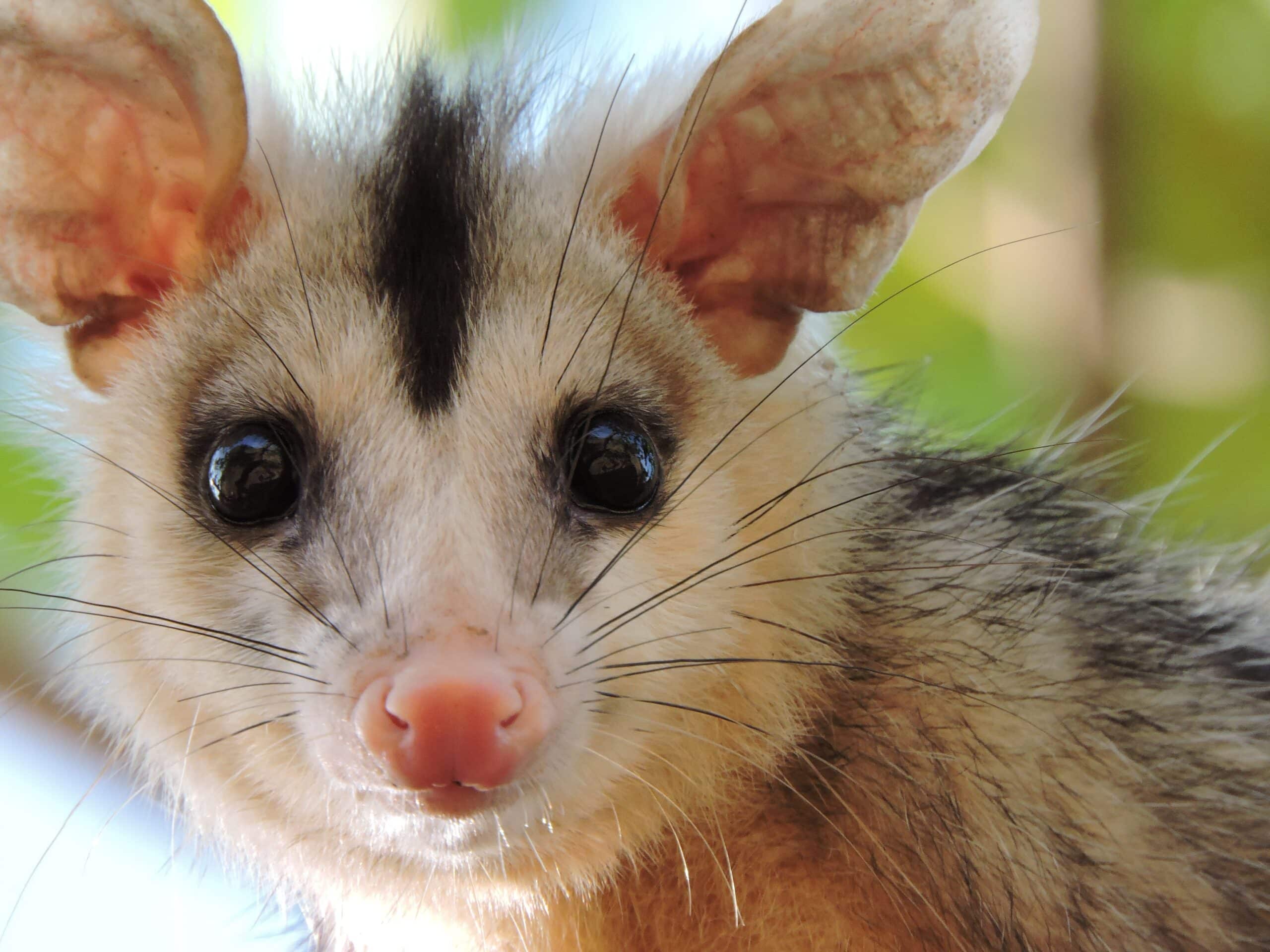
Have you ever heard of the super-cute wallabies but never got the chance to observe their intriguing behavior? From the depths of Australia, learn about the secret lives of these remarkable creatures. Prepare to explore their unique habitats and behaviors that make them so beloved. You are about to discover why wallabies have captivated the hearts of many!
Introduction to Wallabies
The wallaby is a small kangaroo found in many parts of the world, including Australia, New Zealand, and even the United States. Estimates place their size at about 11 pounds when fully grown, though some species can grow to as large as 35 pounds. They have a heightened ability to jump great distances and have strong claws for digging and clinging to trees. Wallabies have several predators, including foxes, dingos, feral cats, and eagles.
Despite their wide range, very little is known about the behavior or habits of wild wallabies because they are often somewhat solitary animals. Because they’re rarely seen in most locations – unless the human population has dramatically disturbed their habitat – there isn’t much known about how they interact with other wildlife or why they take specific habitats over others. This article seeks to provide insight into the secret lives of wallabies so that we may better understand them and provide protection for them if necessary.
Wallaby Habitat

Wallabies inhabit much of Australia, including all mainland states. They can live in various ecosystems, from tropical forests to grasslands and deserts. Some species have also been found in alpine areas at elevations of up to 1,000 m (3,281 ft).
In each geographical area, wallabies prefer different habitats. Like the red-necked pademelon (Thylogale thetis), rainforest-dwelling species in northern Australia are usually seen along freshwater streams with thick vegetation and wide-open spaces for moving around. Species that inhabit open wetlands or grasslands tend to roam more widely over much larger home ranges than those in denser forests or bushland areas.
Wallabies also favor dry environments that protect them from predators, such as dingoes and foxes, while they feed or sleep. Rocky escarpments or rocky outcrops are popular shelter locations with shady crevices where wallabies can rest during the day to avoid heat stress. Areas with plenty of thin trees, clusters, and long grass provide additional protection from predators and the elements, which the swamp wallaby (Wallabia bicolor) primarily relies on when foraging in open-woodland areas during wetter times of the year.
Wallaby Diet

Wallabies are herbivores, meaning they survive off a strictly vegetarian diet of grasses, flowers, leaves, and bark. They also enjoy a variety of fruits and nuts. This foraging pattern allows wallabies to break away from the herd and graze independently. Because of this behavior, wallabies have been recorded to feed in both wooded habitats and open ground with short grasses.
Wallabies rely heavily on the resources within the environment; therefore, their diets can depend significantly on what resources are available in the area. Wallabies primarily consume plants native to Australia, such as grasses like silver tussock (Austrodanthonia). Additionally, they eat shrubs, acacias (Acacia species), wattles (eucalyptus), and other species, including pine needles and berries. Wallabies also enjoy fruits such as melons and watermelons if these plants or fruits are present in their habitat.
Overall, wallaby grazing habits are pretty diverse; however, they prefer shorter vegetation due to the ease of gathering food compared to taller vegetation. Therefore areas that provide easy access to food sources while avoiding predators are ideal for some wallaby populations. Relying on safe places to hide is key; vast fields with longer vegetation serve as an excellent hindrance from possible predators such as foxes or dogs which significantly reduce their chances of successful feeding from occurring.
Wallaby Reproduction

Wallabies reproduce in the same way as many other mammals. After a gestation period of 28 to 33 days, the female typically gives birth to a single joey. Twins may also be born but are less common, and if she does give birth to twins, only one will survive as the second one receives significantly less attention and nutrition from its mother.
The joey remains in its mother’s pouch for six months and is then weaned off her milk and onto solid food until it is old enough to be independent. The joey must remain close to its mother until it can fend for itself, usually when it is 18 months old.
Once the joey has reached sexual maturity, it may seek out a mate. Wallaby breeding season typically occurs between November and March each year, and males will seek out multiple females during this time to boost their chances of passing on their genes before the end of the season. Both males and females take part in courtship rituals before mating, which involve:
- Sniffing each other’s faces
- Rubbing along one another’s bodies
- Sitting close together
- Grooming each other
Wallaby Social Behaviors

Wallabies, like humans, have a complex social structure. They live in family groups called mobs, which vary in size depending on the species, habitat, and resources available. The leading members of the mob are usually the oldest adult female and her closest male relatives. Young males become peripheral members as they age and subordinate to higher-ranking males.
The most dominant wallaby in a mob is usually the alpha individual – the oldest female with the highest social standing. This wallaby may be more aggressive than other members of a mob and will be quick to defend her status if challenged. The rest of a mob’s hierarchy is determined by physical prowess; typically, males defend territory while females lead during foraging trips.
Mobs have distinct social structures that determine how they interact with different individuals in their group or others outside their group. For example:
- Young wallabies are groomed and mentored by older wallabies; this helps them learn essential survival skills and establishes lifelong bonds among all mob members.
- Each individual also has territory within the group, which it stakes out to protect food sources or other resources it wishes to monopolize for itself or others.
- Wallabies also take turns grooming each other and playing or just spending leisure time with each other – but all these behaviors need to conform to the strict societal code within their mob-based society!
Threats to Wallabies
Australia’s native animals face several threats to survival in the wild, and wallabies are no exception. Their most persistent and dangerous predators are foxes, feral cats, and wild dogs, who hunt and predate on small wallabies at night. Other threats they face include:
- Habitat destruction from logging, farming, and urbanization.
- Competition from introduced animals like deer, pigs, and rabbits.
- Drought.
- Disease.
- Stochastic events like bushfires.
- Human-caused roadkill accidents.
- Scavenging by crows.
- Culling is actively carried out in some areas to control wallaby numbers.
To protect the wallabies that remain in Australia’s wild spaces, conservation efforts have been stepped up to reduce the impacts of these threats through:
- Codes of practice for businesses that operate in wallaby habitats.
- Establishing protected land reserves for their species.
- Volunteer pouch-monitoring programs to track the health of populations over time.
- Predator control where necessary to prevent population crashes due to fox or dog predation.
- Public education initiatives that teach people how they can help support these native marsupials through responsible use of land.
Conservation Efforts for Wallabies
The conservation of wallabies and their habitat is of utmost importance to ensure the survival of these unique animals. In particular, preventing their fragmentation and loss of their habitat through land clearing and human encroachment on their natural environment has become a key focus in conservation efforts. There are several initiatives in place to reduce the impact on wallabies, including:
- Surveys to gain an understanding of the population size within a specific area, as well as to identify any potential threats to the species and other aspects of its habitat.
- Education programs for communicating potential risks to these creatures so that people can act more conscientiously in dealing with land clearing or otherwise impacting these habitats.
- Monitoring specific populations to assess how many individuals remain healthy within the group, helping maintain genetic diversity and chances for successful breeding.
Research is being conducted into wallaby behavior to understand further this fantastic animal’s habits, which could prove invaluable when devising effective conservation strategies and mitigating future threats. Conservation efforts can also help nurture endangered species by ensuring they have appropriate food sources and safe havens from predators or threats by humans, such as vehicle strikes or illegal hunting activity. With this kind of extensive protection measures, we can ensure that our wallaby friends will thrive for generations ahead!
Conclusion
After examining the behavior and habitat of wallabies, we can conclude that these creatures lead remarkable life that has allowed them to survive in various environments. Wallabies are nocturnal creatures, spending their days restfully in shelters and caves known as “warrens” while being active throughout the night in search of food and mates. Each wallaby species has adapted behaviors to its particular environment su, ch as better camouflage or fighting strategies, demonstrating their tenacity and ability to adapt.
By learning more about the habits and diet of wallabies, conservationists can better develop solutions to protect them from threats like deforestation or hunting. We must value these animals not just for their beauty but for their fascinating behavior as well.
Frequently Asked Questions
Q: Where do wallabies live?
A: Wallabies are found on the mainland of Australia, Tasmania, New Guinea, and various smaller islands. They inhabit open woodlands, grasslands, and shrublands.
Q: What do wallabies eat?
A: Wallabies are herbivores and primarily eat grasses, leaves, fruits, and insects.
Q: How do wallabies communicate?
A: Wallabies communicate with one another primarily through vocalizations and physical gestures. They also communicate by marking and rubbing scent glands on rocks and trees.





